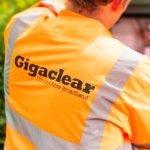Openreach Progress on SOGEA, FTTP, G.fast and New Install Options
We’ve managed to extract some useful progress updates from our industry sources on various different broadband related developments and technologies within Openreach’s (BT) UK ISP network, which covers FTTP, G.fast, SOGEA, 21CN migrations and the forthcoming addition of new install options.
Firstly, Openreach is now expecting that their Fibre-to-the-Premises (FTTP) coverage in the UK will increase from c.650,000 premises passed at the last update to 1.25 million by the end of March 2019 (they’re adding nearly 15,000 per week month at peak), which would confirm that they’re seeing success in ramping up their deployment toward reaching the target of 3 million by the end of 2020.
Some small improvements to FTTP migrations are also planned, which should smooth the path for those seeking to switch from Fibre-to-the-Cabinet (FTTC) lines. One other thing to add is that Openreach appear to have improved the process of FTTP provision so that their on-time delivery is now at about 90% and mean-time-to-provide is at roughly 15 working days (thanks to extra resources and more efficient processes).
Advertisement
At about the same time as they reach 1.25m premises via FTTP (see above) then they should have also grown their G.fast ultrafast broadband base (recorded as 1.12 million premises passed in July 2018) to 2 million, which should take us to their target of 5.7m by the end of 2020 (March 2021 as a financial year).
Moving on to FTTC (VDSL2), Openreach say about 3% of related street cabinets are currently in “waiters” status (down from c.4% earlier this year). Cabinets are often put into this status when there’s no capacity spare to add new connections (this usually references ports rather than bandwidth). Capacity problems can take anything from a couple of weeks to several months to resolve, depending upon cost and complexity.
Now on to other developments..
Single Order Generic Ethernet Access (SOGEA)
The SOGEA solution is designed so that consumers will in the near future be able to buy a standalone hybrid fibre FTTC (VDSL2) or G.fast broadband line without the voice (phone) service (don’t expect a big fall in price since adding voice is a tiny part of the cost). Implementing SOGEA has been a very complicated process and hence the trials have already been extended (here), but Openreach expects that the service could enter the large-scale pilot phase this December 2018.
Advertisement
By the looks of it this pilot will run for around 3 months and so the first commercial SOGEA products would then follow during Spring 2019. However this plan seems to be tentative as ISPs are still getting to grips with the new systems and setup, which leaves some scope for additional delays. Otherwise the core launch window hasn’t changed much since our last update earlier this year.
New Install Options
Openreach appears to be in the process of refreshing the install options that they offer to ISPs and end-users for FTTC, FTTP, G.fast and SOGEA. At present people tend to be offered either a Managed (engineer visit) or Self-Install (no engineer required – supplied with or without an Openreach or ISP modem/router) provision service. In the future these will be tweaked/renamed a bit and a new Premium option will be added.
We hope to learn more about this in the near future. We believe that the current plan is to retire the old approach by around the middle of 2019.
The National 21CN WBC Roll-Out
BT’s 21st Century Network (21CN) powered Wholesale Broadband Connect (WBC) platform, which is the foundation for a lot of modern internet connection technologies on the operator’s network (e.g. ADSL2+), is slowly continuing toward its goal of complete national UK coverage (i.e. replacing the old 20CN services / exchanges).
Advertisement
The target was to complete this by the end of 2018, although a small number will slip into 2019. At present around 280 exchanges are left to be upgraded (from a total of roughly 5,500) and we understand that 93 of those will be done before the end of November 2018. A further 88 will then follow by March 2019.
Meanwhile the final batch of exchanges, which represents some of the most economically and technically challenging bits, do not have a firm date but are expected to be completed sometime during 2019 and a few may even slip into 2020. However, as we previously reported, these only account for around 12,000 end-users.
G.fast Power Trial (Proof of Concept)
Openreach appears to be running a new Proof of Concept (PoC) trial to test a number of future enhancements to their hybrid fibre G.fast ultrafast broadband technology, which is taking place on an old cabinet at their Adastral Park R&D facility. The aim of this is to improve the service’s headline speeds and extend its reach on longer copper lines than are currently possible (at present it prefers sub-300 metre lines).
We don’t know exactly how they’re tweaking the technology, but it does involve different noise margins and power settings. In the future we also expect Openreach to adopt the 212MHz spectrum profile (106MHz is currently the max) in order to further boost speeds (they’ve tested this before using different kit here and here), as well as other recent amendments, but we don’t know if those also form part of the new PoC.
Other Bits
A few other things worth noting are that we still expect a trial of the new G.fast Self Install service (i.e. no engineer visit to your house required – cheaper) to begin by around the very end of this year (details) and the temporary suspension of FTTPoD orders remains in place, with no firm date set for its removal (here).
We’ve also heard talk that Openreach will be testing some further tweaks to their Dynamic Line Management (DLM) system in order to improve the balance between line stability and speed. Sadly we don’t have much information on this, but it doesn’t sound like a major change.
Mark is a professional technology writer, IT consultant and computer engineer from Dorset (England), he also founded ISPreview in 1999 and enjoys analysing the latest telecoms and broadband developments. Find me on X (Twitter), Mastodon, Facebook, BlueSky, Threads.net and Linkedin.
« Gigaclear’s FTTP Broadband Delays Spread to Northamptonshire

















































Comments are closed